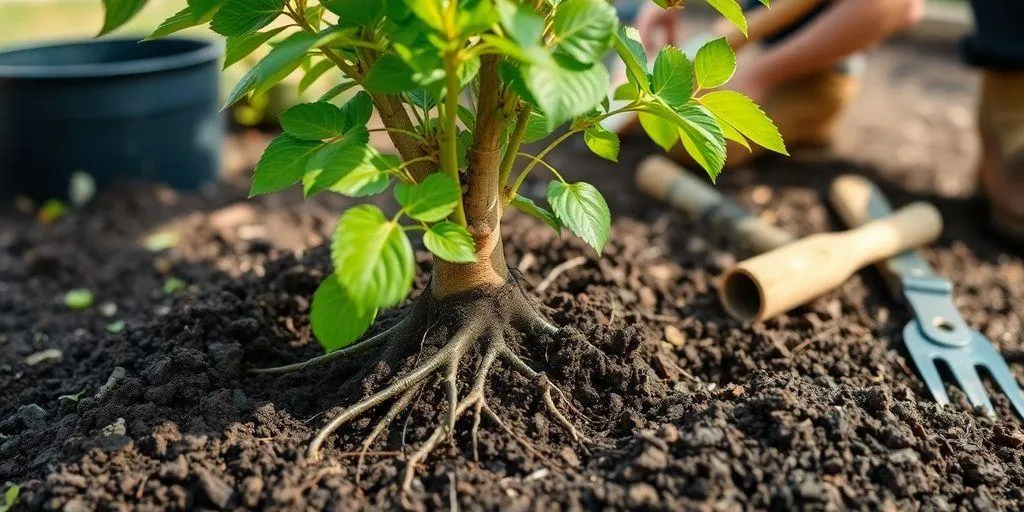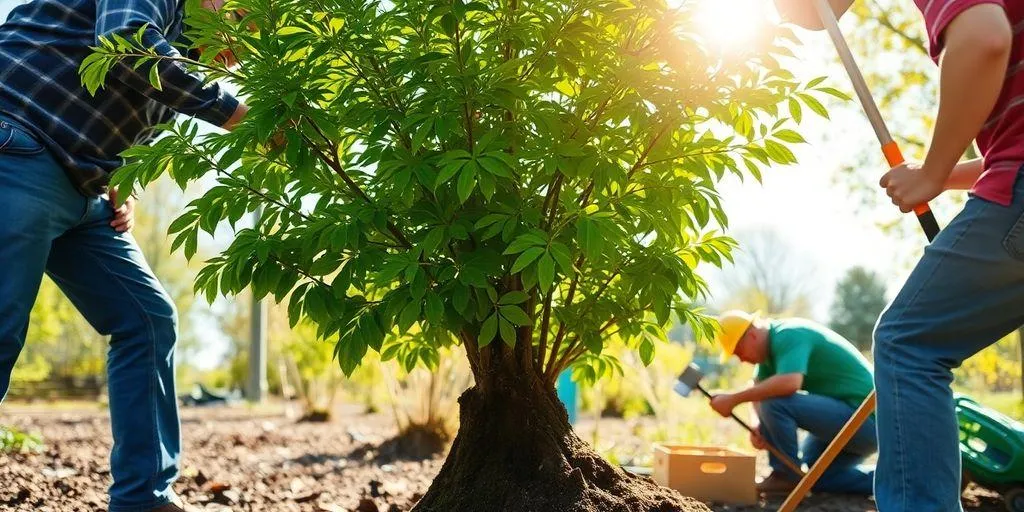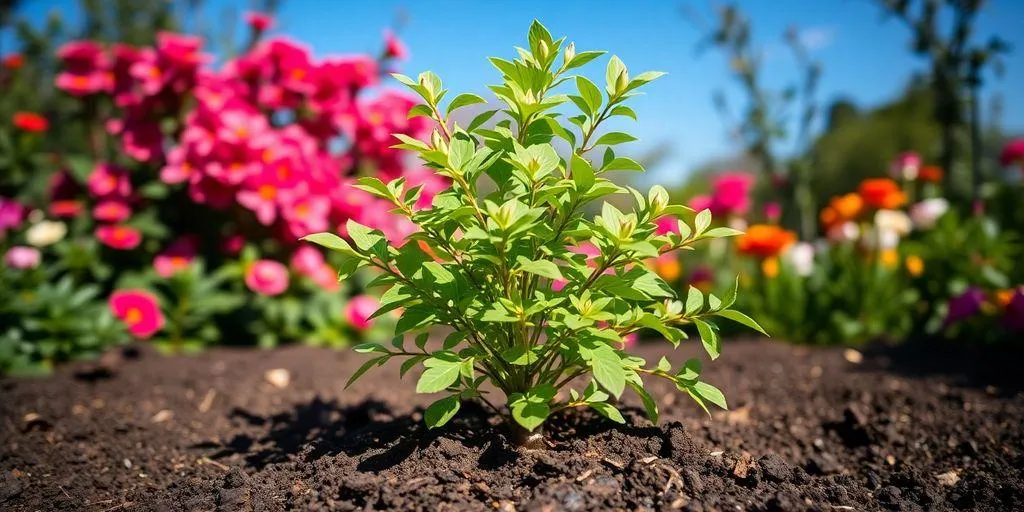Tree Service Montreal
Expert Guide to Tree Transplanting in Montreal: Tips for Successful Relocation
Expert tips for successful tree transplanting in Montreal. Learn seasons, preparation, and post-care.
Thinking about moving a tree in your yard? It's not as simple as you might think, especially here in Montreal. The climate, the soil, and even the time of year can make a big difference in whether your tree thrives or struggles. But don't worry, with the right info and a bit of elbow grease, you can do it. This guide will walk you through the ins and outs of tree transplanting in Montreal, so you can give your tree the best chance at a fresh start.
Key Takeaways
. Timing is key: Choose the right season for transplanting to improve success rates.
. Preparation matters: Proper soil and location prep can make all the difference.
. Post-care is crucial: Watering and monitoring after transplanting ensures the tree adapts well.
Understanding the Basics of Tree Transplanting

Why Transplant Trees in Montreal?
Transplanting trees in Montreal can be a rewarding task for several reasons. First off, it helps in urban planning and development. Sometimes trees need to be moved to accommodate new buildings or roads. Other times, it's about improving the landscape of your backyard or garden. We might also want to save a tree from an area where it can't thrive, like a spot with poor soil or too much shade.
Ideal Seasons for Tree Transplanting
Timing is everything when it comes to tree transplanting. In Montreal, the best seasons are spring and fall. During these periods, trees are usually dormant, which means they're not actively growing. This dormancy reduces stress on the tree, giving it a better chance to adapt to its new home. Spring offers the advantage of a full growing season ahead, while fall provides cooler temperatures and less evaporation, which helps the tree settle in.
Assessing Tree Health Before Transplanting
Before we even think about moving a tree, we need to check its health. Look for signs of disease, like discolored leaves or unusual growths. A healthy tree will have vibrant leaves and strong branches. It's also important to consider the tree's age and size. Younger trees adapt more easily to new locations, while older, larger trees might need special care. If a tree shows signs of poor health, it might not survive the move, so sometimes it's better to leave it be.
Preparing for a Successful Tree Transplant

Choosing the Right Location
When it comes to tree transplanting, picking the right spot is like choosing a home. We need to think about the tree's future growth, sunlight needs, and space. Finding a location with enough room for roots to spread and branches to grow is key. We should also consider how close it is to buildings or other trees. A little planning now can prevent headaches later.
Soil Preparation Techniques
Before moving the tree, let's talk dirt. Good soil is the backbone of a healthy tree. We might need to add some organic material like compost to enrich it. Testing the soil's pH can also help us know if we need to adjust it. Here's a quick rundown of what we might do:
. Check the soil pH and adjust if necessary.
. Mix in compost or other organic matter.
. Ensure proper drainage to avoid waterlogged roots.
Gathering Necessary Tools and Equipment
Having the right tools can make the transplanting process smoother. Here's a list of what we should have on hand:
1. Shovels and spades for digging.
2. A wheelbarrow to transport soil and the tree.
3. Pruning shears for trimming roots or branches if needed.
Taking the time to prepare properly can mean the difference between a thriving tree and one that struggles to survive. Let's make sure we're ready before we start digging.
Step-by-Step Guide to Transplanting Trees
Digging and Preparing the New Hole
Alright, let's get started with preparing the new spot for our tree. First things first, we need to dig a hole that's about twice as wide as the tree's root ball but only as deep as the root ball itself. This gives the roots plenty of room to spread out once we move the tree. Here's a quick list to keep in mind:
. Measure the root ball to get the right dimensions.
. Use a spade or shovel to dig the hole.
. Make sure the bottom of the hole is firm to prevent sinking.
Safely Uprooting the Tree
Now comes the tricky part—getting the tree out of its current home without damaging it. Start by watering the tree a day before the move to reduce stress. When you're ready, dig around the tree's drip line and carefully work your way under the root ball. Keep the root mass intact as much as possible to help the tree adjust to its new location.
Transporting the Tree to Its New Location
With the tree safely uprooted, it's time to move it. If the tree is small, we can carry it by hand, but for larger trees, we might need a wheelbarrow or even a truck. Make sure to keep the root ball moist during transport. Here's how we can do it:
1. Wrap the root ball in burlap for protection.
2. Secure the tree in the transport vehicle.
3. Move it to the new location promptly to avoid drying out.
Transplanting trees is like giving them a fresh start in life. It's a careful process, but with patience and the right steps, our trees can thrive in their new homes.
Post-Transplant Care and Maintenance

Watering and Fertilizing Tips
Once we've moved a tree to its new home, the first thing we need to do is give it a good drink. Watering is crucial, especially in the first few weeks. Let's make sure we're soaking the soil deeply around the root ball. It's not just a sprinkle; we're talking about a thorough soak. We should aim to water every few days initially, then taper off as the tree starts to settle in.
Fertilizing isn't always necessary right after transplanting. In fact, too much can actually harm our tree. If the soil is poor, a light application of a balanced fertilizer might help, but let's wait until we see some new growth before we start feeding it.
Monitoring Tree Health After Transplant
Keeping an eye on our tree's health is like checking in on a friend who's just moved to a new city. We should look for signs of stress, like wilting or yellowing leaves. These might mean our tree needs more water or is struggling to adapt. If we notice any pests or diseases, it's time to act quickly. Regular checks mean we can catch problems early and help our tree thrive.
Dealing with Transplant Shock
Transplant shock is like the tree's version of jet lag. It's common, but there are ways we can help. First, let's make sure we're watering correctly. Too much or too little can make things worse. Mulching around the base of the tree helps keep moisture in and weeds out. And patience is key; sometimes, it just takes time for the tree to bounce back.
Remember, the journey doesn't end once the tree is in the ground. With the right care, our tree will grow strong and healthy, becoming a beautiful part of our landscape.
